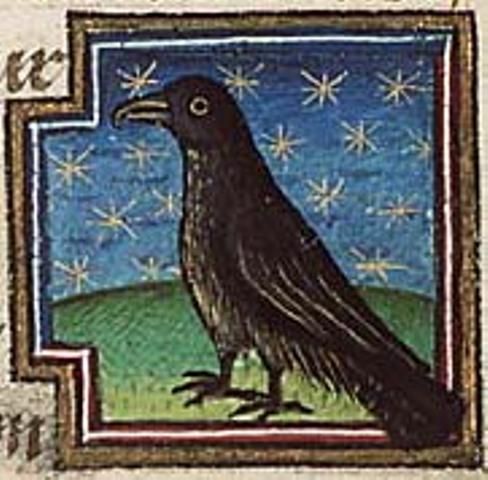















Cuneglasus
Welsh name: Cynglas Goch (Cynglas the Red)
Sixth-century king centered in Rhos (SW Dyfed); a possible model for King Arthur.
And thou too, Cuneglasse, why art thou fallen into the filth of thy former naughtiness, yea, since the very first spring of thy tender youth, thou bear, thou rider and ruler of many, and guider of the chariot which is the receptacle of the bear, thou contemner of God, and vilifier of his order, thou tawny butcher, as in the Latin tongue thy name signifies.... Why, besides thine other innumerable backslidings, having thrown out of doors thy wife, dost thou, in the lust, or rather stupidity of thy mind... esteem her detestable sister, who had vowed unto God the everlasting contineney, as the very dower (in the language of the poet) of the celestial nymphs?--Saint Gildas "De Excido"
Each of Gildas' tyrants is mentioned by Geoffrey's Historia: Constantine, Vortipor, Aurelius Conan, and Maelgwn Gwynedd each appear in both tracts. Only Cuneglasus is ignored by Geoffrey. Nor is he mentioned by Nennius. This has also lead some to believe that Cuneglasus is one of the models for Arthur.
His name in the Welsh genealogies is written as Cynglas, likely meaning "gray hound"; however, Gildas gives his name as Cuneglasus, and says his name means "red butcher." A pun, but what else to make of it? In the Welsh triads, Arthur is called "one who was a Red Ravager greater than all three." Moreover, Cuneglasus is called Goch in Welsh, meaning "red."
Cuneglasus is called urse "bear." In a 13th century copy of the Historia Brittonum, Arthur is noted as meaning Ursus Horribilis--horrible bear. Curiously, the name of Arthur's father--Uther--is a Welsh word meaning "horrible." More importantly, the first element of Arthur's name--arth--means bear in Welsh. A contemporaneous pun, surely, whether or not "Arthur" is ultimately derived from "Artorius."
But names aside, what relationship does Cuneglasus have to the story of King Arthur? Cuneglasus is said to have been a warrior from his youth; King Arthur is said to have been crowned when fifteen, though this is likely just a coincidence.
He is described as persecuting the Church; there are a number of saints' lives which depict Arthur as butting heads with saints, abbots, and monestaries, the most famous being in (ironically enough) The Life of Saint Gildas.
Cuneglasus is accused of shutting out his wife and lusting after her sister. This mirrors medieval romance, wherein the true Guenevere is replaced by her evil false sister; in the Welsh triads, there is a tradition of a fight between Gwenhwyfar and her sister Gwenhwyfach, causing the Battle of Camlann; in another triad, it is said that there are three Gwenhwyfars, the "Arthur's Three Great Queens."
Is Cuneglasus Arthur? He may have contributed to the Arthurian persona, but we cannot definitively say he is Arthur.

Back to "C" | Back to JCE
Home
Mary Jones © 2005